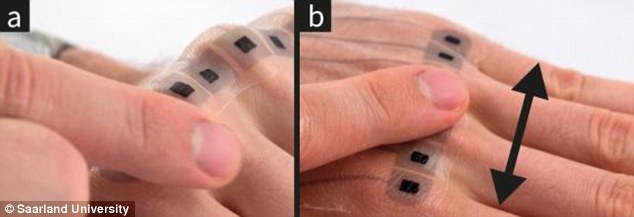
Now researchers have developed a way to make use of your wrinkles, freckles and other skin problems. Ultrathin temporary tattoos can turn these body blemishes into touch sensitive buttons to control your smartphones.
Martin Weigel at Saarland University in Saarbrücken, Germany, who is the leader of the research, says that people instinctively know the exact location of the marks or bumps on their own body, which makes these perfect locations to allocate touch-sensitive buttons.
Weigel and his fellow researchers at Saarland University along with Google used conductive ink to print wires and electrodes on temporary tattoo paper. The tattoos, which the researchers call SkinMarks are even thinner than the width of a human hair. These tattoos are transferred to the skin using water and they stay on the skin for a couple of days before rubbing off.
By making the tattoos responsive to changes in the skin surface, multiple commands have been incorporated at one location.
With the help of these smart tattoos here is what you can do: adjust your smartphone's volume by sliding one finger across a tattoo placed along the side of another finger, bend the tattooed finger it becomes a play and pause button, tattoos on the knuckles could act as four distinct buttons when the hand is making a fist and function as one long slider when the fingers are extended.
Another of these amazing touch-sensitive tattoos is electroluminescent. This one glows when current passes through it. These tattoos can be done on screen in shape of someone's favourite smartphone app, which would light up when receives a notification.
The team has also placed a heart-shaped tattoo over a volunteer's birthmark that can glow when a nominated loved one is available for a phone call. Touching the tattoo would call that person's phone, reported New Scientist.
"We make use of the elastic properties of the skin, including bending and stretching," says Jürgen Steimle, a team member of Weigel.
These researchers will present the work at a computer-human interaction conference in Denver, Colorado in May.
Chris Harrison at Carnegie Mellon University said that despite the current limitations, on-skin devices are only the logical step following the wearable technology. It will take more or less 10 years from now to make touch-sensitive tattoos mainstream but this is a welcome step towards that future, added Harrision.









